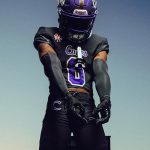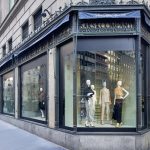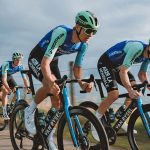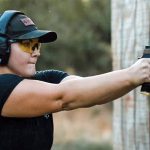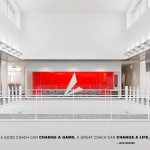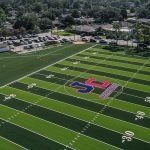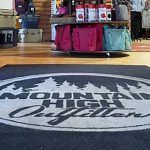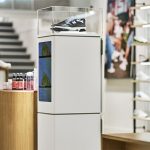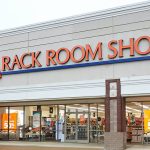Last week, Foot Locker, Inc. announced that Ken Hicks, president and chief merchant of J.C. Penney Co., would become its new president & CEO, effective August 17. Hicks will succeed Matt Serra, who has been CEO of Foot Locker since March 2001 and chairman of the board since February 2004.
From 2002 to 2004, Hicks had been Penney's president and COO of stores and merchandise operations. At Penney, Hicks earned credit for enhancing customer service and better attracting female shoppers, making womens apparel once again one of the department stores top-selling categories. Previously, Hicks was president of Payless Shoe Source and EVP of merchandising and programming for the Home Shopping Network. Hicks also held a number of senior posts at May Department Stores, including SVP and GMM at Foley's.
Serra, 64, will continue as Foot Locker's chairman until his planned retirement at the end of the company's current fiscal year, Jan. 30, 2010. Here, Sports Executive Weekly talks to Serra about the new CEO hiring, his own plans and legacy, and how Foot Locker is managing the downturn.
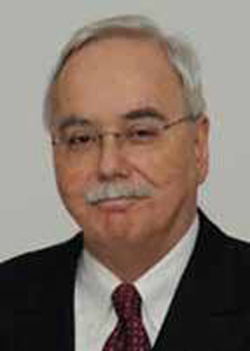
SEW: Can you discuss the process and Ken's hiring?
MS: Quite frankly, at our August 08 board meeting I informed the board that I would be retiring from Foot Locker at the end of my contract, which ends January 30, 2010. We have always worked on succession planning from the day I became CEO not only for me but for all our senior people. And we went through a process of identifying internal and external candidates. I also informed the board at our August 2008 meeting that I was going to engage Spencer Stuart to do an evaluation and process assessment for my replacement. So after reviewing candidates, both internally and externally, the search committee on the board identified Ken as the leading candidate. I've known Ken for quite some time, and worked briefly with him at May Co. He's a strong merchant, a good businessman and an excellent people person. And I thought he would be a great fit here at the company.
MS: Quite frankly, at our August 08 board meeting I informed the board that I would be retiring from Foot Locker at the end of my contract, which ends January 30, 2010. We have always worked on succession planning from the day I became CEO not only for me but for all our senior people. And we went through a process of identifying internal and external candidates. I also informed the board at our August 2008 meeting that I was going to engage Spencer Stuart to do an evaluation and process assessment for my replacement. So after reviewing candidates, both internally and externally, the search committee on the board identified Ken as the leading candidate. I've known Ken for quite some time, and worked briefly with him at May Co. He's a strong merchant, a good businessman and an excellent people person. And I thought he would be a great fit here at the company.
SEW: Was an outside perspective required?
MS: I think a fresh pair of eyes is probably needed in looking at the business even though I dont expect there to be dramatic changes. But we had good internal candidates and a lot of external candidates and I'm very pleased that we were able to attract Ken to the company. He's a class act and he's going to do very well here.
MS: I think a fresh pair of eyes is probably needed in looking at the business even though I dont expect there to be dramatic changes. But we had good internal candidates and a lot of external candidates and I'm very pleased that we were able to attract Ken to the company. He's a class act and he's going to do very well here.
SEW: The rest of your team is staying on?
MS: Yes.
MS: Yes.
SEW: You're bringing in someone with a department store background much like yourself. Does that make a difference?
MS: We have a lot of strong shoe merchants here. I'm not looking for a shoe dog. I want a strong general manager, a good businessperson. But in department stores, you still have a big shoe business.
SEW: What was it like for yourself moving from the department store world to mall-specialty footwear?
MS: I had a lot of shoe experience coming into the job. It's basically the same volume but it's more stores and one category. Instead of 20 families of businesses, you're dealing with one family of business. That's the significant difference. But the principles of merchandising and management are the same. And many people now running successful specialty chains have come out of department stores.
MS: I had a lot of shoe experience coming into the job. It's basically the same volume but it's more stores and one category. Instead of 20 families of businesses, you're dealing with one family of business. That's the significant difference. But the principles of merchandising and management are the same. And many people now running successful specialty chains have come out of department stores.
SEW: What drove your own move to step down?
MS: Its been a long run eleven years and I think it's time to do something else.
MS: Its been a long run eleven years and I think it's time to do something else.
SEW: No plans to retire?
MS: I'll be involved in a business after I retire. It's time for a new challenge for me.
SEW: What type of company will Ken Hicks be taking over? What are his challenges?
MS: First of all, the company's in excellent financial condition. We have a very strong balance sheet. I believe we have strong divisional management and corporate management. I think his challenges will be at the appropriate time to get the top line moving. Right now, that's not principally our focus. You'd like to get the top line moving but were controlling the controllables. That means controlling the margins and controlling the expenses and making sure the balance sheet is bullet proof, so to speak. And just getting through this difficult time, which quite frankly none of us has ever seen. I've been doing this for 43 years and have been through four recessions and this one is extremely challenging.
MS: First of all, the company's in excellent financial condition. We have a very strong balance sheet. I believe we have strong divisional management and corporate management. I think his challenges will be at the appropriate time to get the top line moving. Right now, that's not principally our focus. You'd like to get the top line moving but were controlling the controllables. That means controlling the margins and controlling the expenses and making sure the balance sheet is bullet proof, so to speak. And just getting through this difficult time, which quite frankly none of us has ever seen. I've been doing this for 43 years and have been through four recessions and this one is extremely challenging.
SEW: Looking back, how would you assess your accomplishments at Foot Locker?
MS: We grew sales from roughly $4 billion [when I started] to $5.8 billion in 2006. The last two years have been rough but we've had some good growth. Our EBITDA margin grew from a negative when I joined the company to a high watermark of 10.7%. The last couple of years it's been in the 5% to 6% range but we believe it will come back over time. And I think we put together a very strong organization. I feel very good about the people who are in the senior and middle-management positions here. We also renovated 90% of our fleet over the last decade. We continue to update our stores. We made the acquisition of Footaction.
SEW: Any disappointments?
MS: There are always disappointments. I had hoped that we would have consummated the Genesco merger but that didnt' happen. That was kind of a very disappointing period during my tenure. But other than that, it's been a pretty good run.
SEW: Foot Locker's main focus now?
MS: Controlling the controllables. Everybody likes sales but we're focused on margin, expense and managing that balance sheet. The investment community at large is looking to invest in companies that are gong to be around. So liquidity is an important ingredient.
SEW: Many of your competitors are also focusing more on margins. Has the industry found a new religion?
MS: They better. We learned it the hard way.
SEW: When do you think we'll come out of this downturn?
MS: I've been through four rough recessions and none of us has ever seen anything quite like this. I think it will be some time before it turns around. You hear economists talking about things getting better. I think people are nervous. The consumer is very jittery. This too shall pass but it will be a longer period than people believe.
MS: I've been through four rough recessions and none of us has ever seen anything quite like this. I think it will be some time before it turns around. You hear economists talking about things getting better. I think people are nervous. The consumer is very jittery. This too shall pass but it will be a longer period than people believe.


